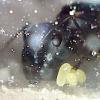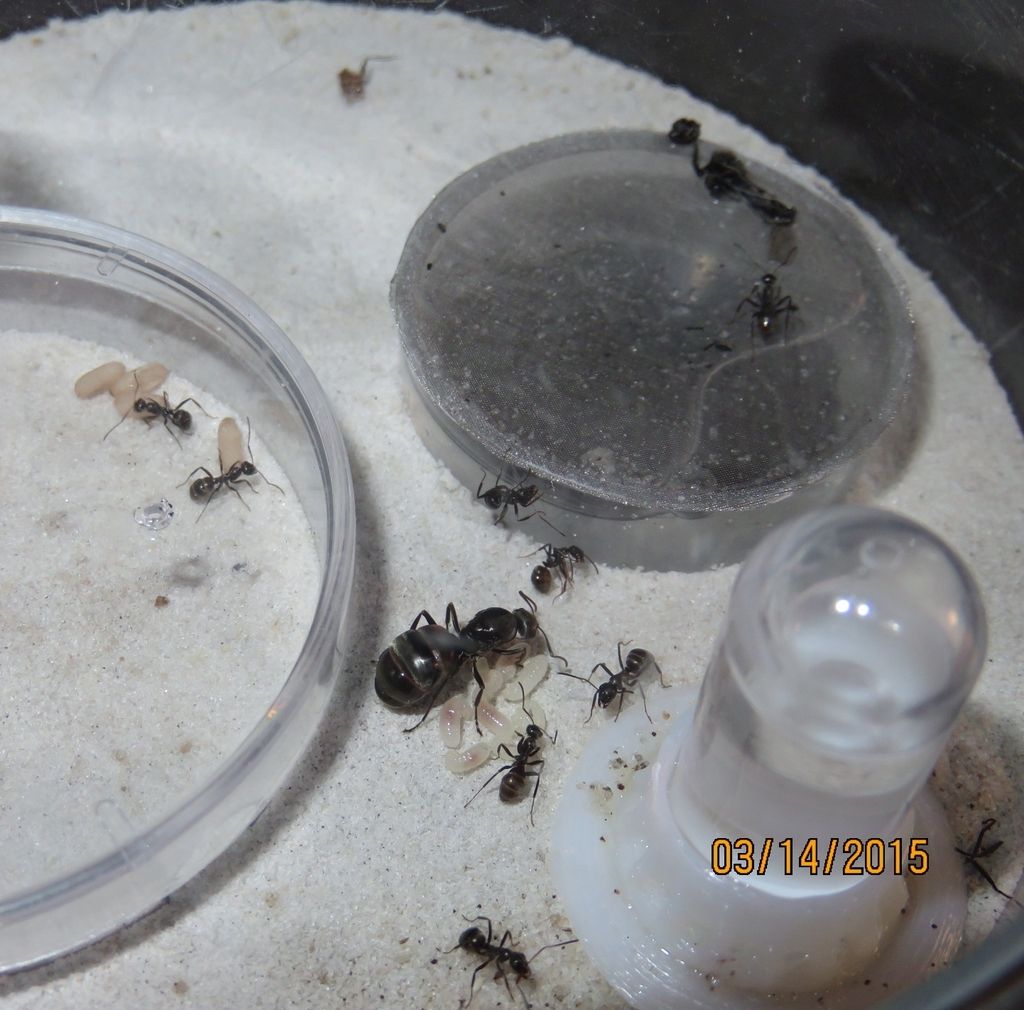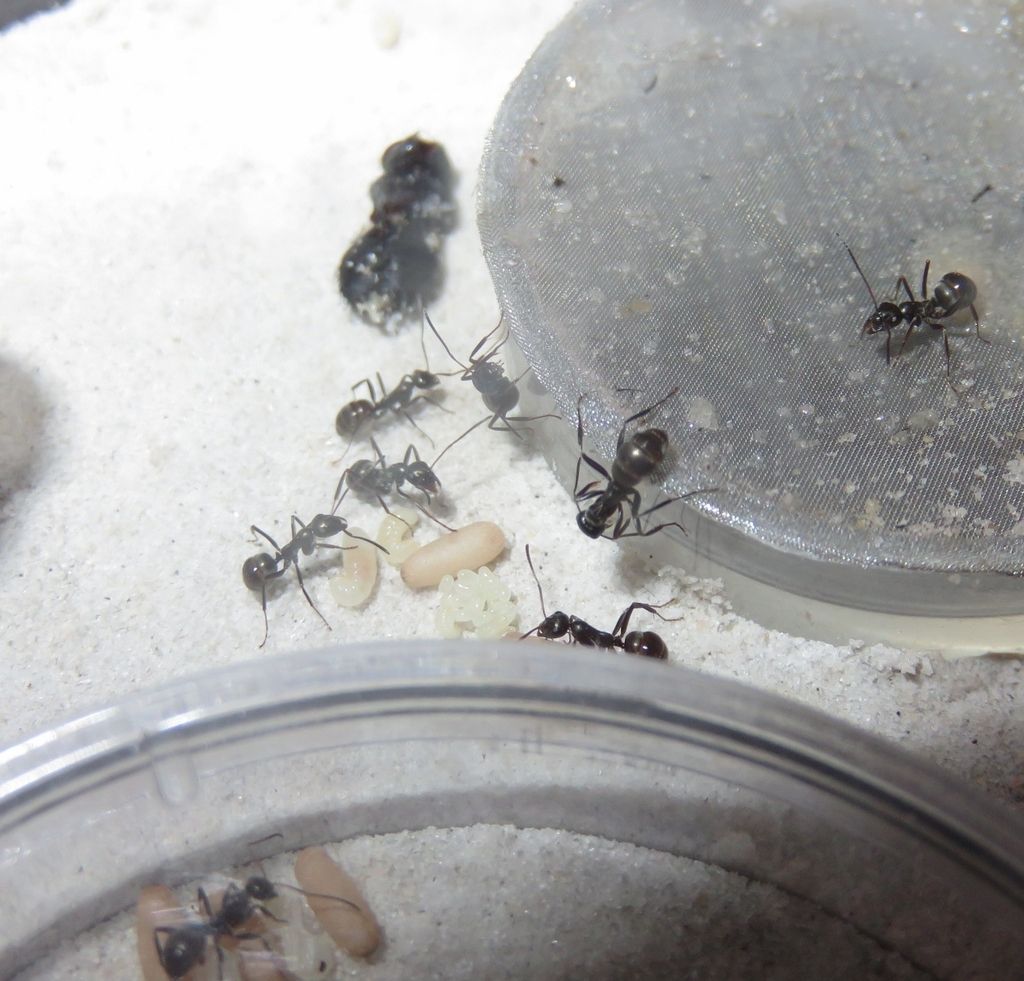The ants are aware that they have mites because I've noticed that they make sure mites don't reach larvae by picking any loose mites and place them back deeper into garbage file.
I was unable to take this behavior with my microscope since its LED light scares them. I will try to get this behavior filmed with my old microscope.
If they can co-exist and the mites pose no harm, then I am willing to let them co-exist together since the mites take care of food scraps.
Edited by dean_k, March 7 2015 - 8:47 AM.






















